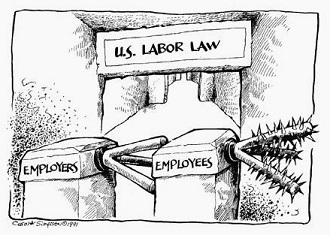The social chasm in America’s cities

On Thursday, the Brookings Institution published a report documenting the sharp growth of social inequality in major metropolitan areas throughout the United States. The report’s findings are of vast significance in three respects.
First, the report documents the immense scale of social inequality and the rapidity with which it is growing, even in cities that are supposedly economic success stories.
Secondly, it shows the crushing growth of poverty and economic distress in these cities.
Thirdly, it implies that these conditions are not the result of a passing economic slowdown, but are rather embedded in the economic system and have become permanent facts of life.
According to the study, across the US, a household in the 95th percentile of income earners—that is, at the bottom of the top five percent—in 2012 had an income nine times greater than the a household in the 20th percentile—that is, at the top of the bottom fifth of income earners. But major cities had a much higher level of income inequality. The ratio was 18.8 for Atlanta, 16.6 for San Francisco, 15.7 for Miami, 15.3 for Boston and 13.3 for Washington DC.
The report documents the massive decline in working class incomes that took place between 2007 and 2012. For example, in Indianapolis—hit by a wave of industrial plant closures—the income of a typical household in the 20th percentile fell by $5,800, or more than a quarter, to $16,883. In Jacksonville, Florida the income of a household in this bracket fell by $7,800, or 30 percent, to $17,411.
“A city where the rich are very rich, and the poor very poor, is likely to face many difficulties,” the report states. “It may struggle to maintain mixed-income school environments that produce better outcomes for low-income kids. It may have too narrow a tax base from which to sustainably raise the revenues necessary for essential city services. And it may fail to produce housing and neighborhoods accessible to middle-class workers and families...”
This describes the great majority of American cities and amounts to an admission that the present social order holds no prospect for decent housing, health care or education for the great majority of city dwellers.


























